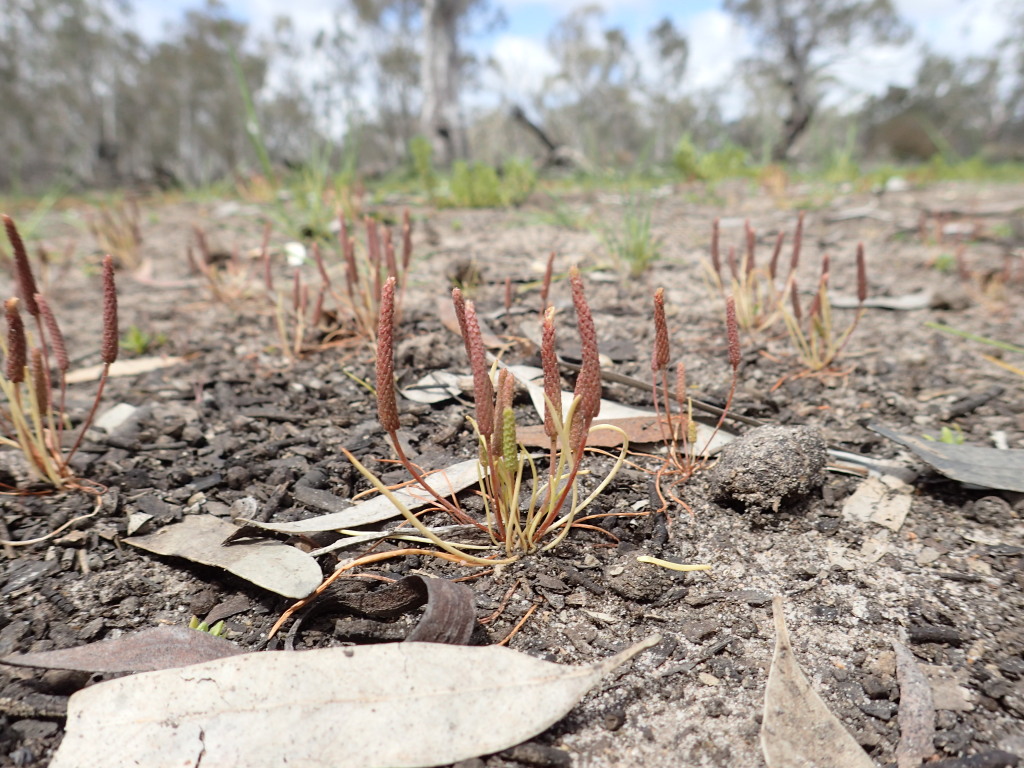Myosurus australis
F.Muell. MousetailShort-lived annual, 1.5–15 cm high. Leaves narrow-linear, sometimes slightly expanded above, 1–10 cm long, 0.5–2 mm wide, usually withering before fruit develops. Flowering stem mostly 1–3 cm long at anthesis, elongating to c. 10 cm in fruit; sepals 1.5–3 mm long, including spur of 0.5–1 mm; petals mostly 3–5, sometimes absent, 1.5–2.5 mm long, expanded in the upper half; nectary minute, bracket-like, attached just below expanded part of petal; stamens 5–10, subequal to petals. Fruiting spike cylindric, 5–40 mm long, 1.5–2.5 mm diam.; achenes typically 100–300 per spike, dorsally diamond-shaped to trullate, c. 1 mm long, including the appressed, ascending beak 0.3–0.5 mm long. Flowers Sep.–Nov.
LoM, MuM, Wim, VVP, VRiv, MSB, RobP, MuF, Gold, CVU. Also WA (naturalised), SA, Qld, NSW, ACT, Tas. Occasional on drying mud around pools, lakes and billabongs, mainly in the north and north-west (e.g. Hattah Lakes, Wyperfeld National Park, Barmah, Kerang areas), with scattered occurrences near e.g. Mt Dundas, Portland, Moyston, Maryborough, Beaufort.
Myosurus australis is distinguished from M. minimus var. minimus of Europe and North America in having more angular and relatively longer achenes. Treated as Myosurus minimus var. australis in WA, SA and NSW.
Walsh, N.G. (1996). Ranunculaceae. In: Walsh, N.G.; Entwisle, T.J., Flora of Victoria Vol. 3, Dicotyledons Winteraceae to Myrtaceae, pp. 35–63. Inkata Press, Melbourne.
 Spinning
Spinning



